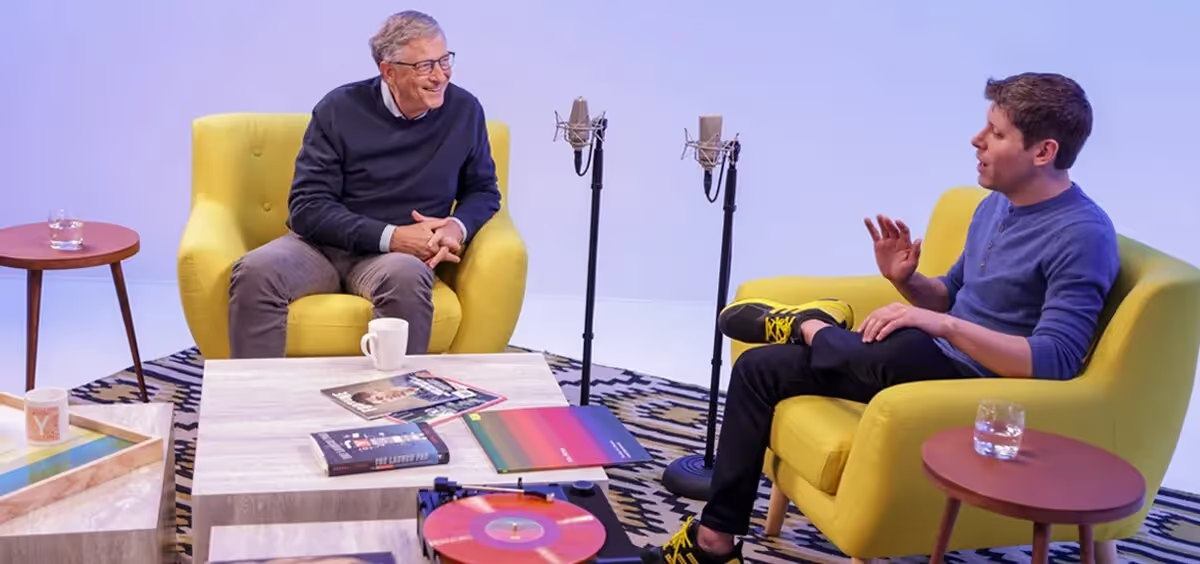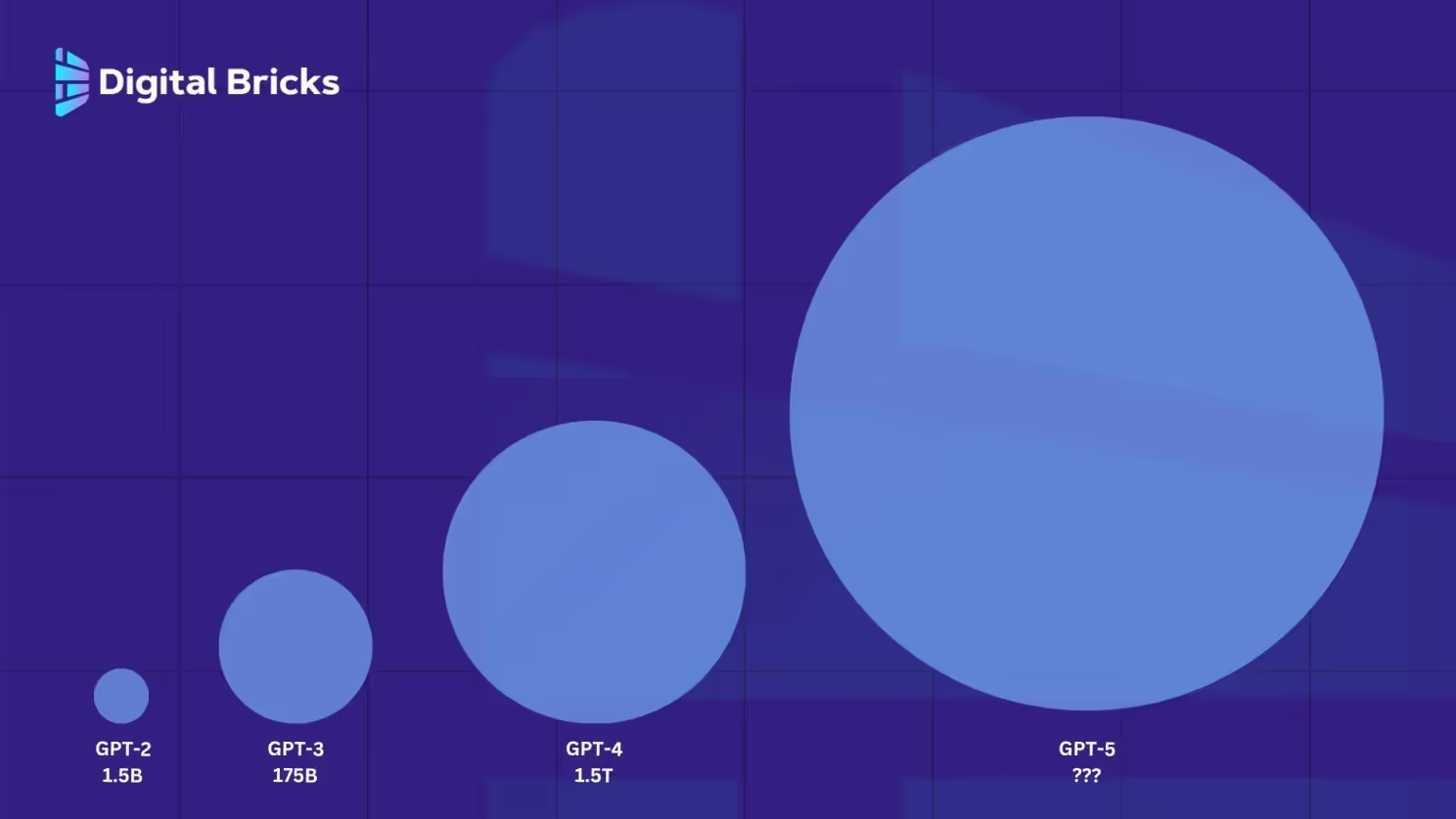
Are you ready for GPT-5?

.avif)


.avif)
Over a year has passed since ChatGPT's debut, captivating users with its remarkable language understanding and generation capabilities. Yet, the rapid pace of AI innovation means that OpenAI's work now shares the spotlight with formidable contenders like Google's Gemini, and emerging players such as Anthropic, all fueled by a robust open-source movement exemplified by Meta's LLaMA project.
As the tech community eagerly awaits the dawn of ChatGPT-5, the speculation surrounding its potential grows. Drawing insights from predecessors like GPT-4 and the trajectory of AI advancements, we embark on a journey to uncover the possibilities and uncertainties that lie ahead.
In this article, we explore the anticipated features and improvements of GPT-5 while acknowledging the dynamic landscape of AI innovation. While much remains speculative, our exploration aims to shed light on the evolving intersection of technology and human interaction.
Generative Pre-trained Transformer or GPT is a series of large language models (LLM) developed by OpenAI that have significantly influenced both the ML and AI fields.
GPT, at its core, is designed to understand and generate human-like text based on the input it receives. These models are trained from vast datasets. The GPT family of models has been instrumental in popularizing LLM-based applications, setting new benchmarks for what is possible in natural language processing, generation, and beyond.
GPT-5 represents the next iteration in the GPT series. Some of you might be wondering what the next iteration means. Let's look at the history of GPT models so far:

In 2018, OpenAI pioneered the concept of generative pre-training with GPT-1, leveraging a transformer architecture to elevate natural language understanding. Although outlined in their paper "Improving Language Understanding by Generative Pre-Training," GPT-1 remained an internal proof-of-concept and was not released to the public.
A year later, OpenAI debuted GPT-2, heralding substantial advancements in text generation. GPT-2 showcased the ability to generate concise passages of text, representing a significant leap from its predecessor. Its public availability encouraged widespread experimentation within the machine learning community.
In 2020, the unveiling of GPT-3 marked a monumental scaling up of the model, boasting 100 times more parameters than GPT-2. This expansion empowered GPT-3 to generate significantly longer and more coherent text, excelling across diverse tasks. The introduction of ChatGPT, a variant focused on conversational interactions within the GPT-3.5 series, underscored the model's capacity to generate text resembling human-like expressions, garnering swift adoption and amassing 100 million users within two months.

Building upon the foundations laid by its predecessors, GPT-4 represents the latest iteration in the series. With an augmented dataset and increased parameters, GPT-4 enhances natural language understanding and generation capabilities. It demonstrates heightened proficiency in generating coherent, contextually relevant text across extended passages and exhibits enhanced comprehension in intricate conversational contexts.
GPT-4's advancements encompass a nuanced grasp of context, improved factual accuracy, and a reduction in the generation of biased or harmful content. Its adoption spans diverse applications, ranging from advanced conversational agents to sophisticated content creation tools, underscoring its adaptability and the continuous evolution of AI-driven natural language processing technologies.
In November 2023, OpenAI introduced GPT-4 Turbo with Vision, an iteration that introduced several feature enhancements. For a comprehensive overview of the GPT family's evolution, refer to our previous article detailing the advancements in GPT-4.
On 16th February 2024, OpenAI introduced Sora, a text-to-video model. Sora can generate videos up to a minute long while maintaining visual quality and adherence to the user’s prompt.
In a January 2024 conversation between Sam Altman and Bill Gates, Gates received confirmation that the development of GPT-5 had commenced, although no specific details regarding its release date were disclosed.

Reflecting on the trajectory of GPT-4 could provide insights into the potential launch of GPT-5. Despite OpenAI's release of GPT-4 shortly after ChatGPT, it's known that the development cycle of GPT-4, encompassing training, development, and testing phases, spanned over two years.
If GPT-5 adheres to a comparable timeline, its launch might extend to the culmination of 2025. While this projected timeline may seem distant, it doesn't preclude OpenAI from continuing to enhance GPT-4.
It's probable that OpenAI will persist in refining GPT-4, potentially introducing an interim update like GPT-4.5, just like to the evolution observed with GPT-3.5.
As the potential release of GPT-5 looms, prognostications about its advancements rely heavily on prevailing trends shaped by Google and open-source AI initiatives. These trajectories offer valuable glimpses into the future course of the industry.
Yet, the OpenAI core team offers some initial cues. In Gates's interview, Altman emphasized that OpenAI's focus would center on augmenting reasoning capabilities and integrating video processing functionalities.
With these insights in mind, let's delve into the realm of possibilities and contemplate several key enhancements anticipated from GPT-5.
Parameter size
The precise parameter size of GPT-4 remains undisclosed, yet there's a discernible trend toward increasingly intricate and proficient models. Multiple sources suggest the parameter count might hover around 1.5 trillion.
Should this trend persist, GPT-5 has the potential to reshape the boundaries of existing LLMs, presenting an unparalleled scale.

Multimodality
Considering the existing capabilities of the GPT-4 model, which already encompasses speech and image functionalities, the incorporation of video processing emerges as a logical evolution for GPT-5. Google has already initiated experiments with this feature in its Gemini model, and with the recent introduction to Sora it's evident this is an area OpenAI is looking to build on for GPT-5.
This evolution could herald a significant transformation in our interactions with AI, facilitating more natural and adaptable forms of communication.
From Chatbot to Agent
The shift from chatbots to fully autonomous agents represents a captivating frontier. Picture a scenario where you can delegate mundane tasks or assignments to a GPT-powered application. This vision could very well materialize if OpenAI persists in integrating third-party services. The advent of Custom GPTs marks just the beginning, with further advancements on the horizon.
This innovative feature would empower GPT-5 to seamlessly interface with various services and execute actions in the physical world autonomously, carrying out tasks on behalf of users without direct human supervision. For instance, one could instruct an autonomous agent to purchase groceries tailored to personal dietary preferences.
Better accuracy
With each iteration, GPT models have seen improvements in accuracy, rendering them increasingly dependable in grasping context and furnishing suitable responses. Advancements in the next generation of GPT models entail enlarging both the size and diversity of the training dataset.
Comparatively, the current GPT-4 model demonstrates a 40% enhancement over its precursor, GPT-3. Thus, the trajectory suggests that GPT-5 will likely follow suit, further diminishing errors and refining the fidelity of its interactions.
Increased context window
One of the constraints inherent in current models is the limited size of the context window they can utilize when generating responses. With the potential for GPT-5 to undergo training with a more extensive dataset, expectations arise for an enlarged context window. This expansion would enable GPT-5 to comprehend and reference larger segments of text, thereby producing more coherent and contextually relevant outputs.
Cost-effective use of the OpenAI API
With the introduction of newer models, there's an expectation for a decrease in the cost associated with utilizing the OpenAI API, thereby making technologies such as GPT-4 and GPT-3.5 more attainable. The release of GPT-5 could potentially lead to increased accessibility and affordability of GPT-4.
This democratization of access has the potential to catalyze a wave of innovation, allowing a wider spectrum of developers and organisations to incorporate advanced AI into their applications.
As these models become more economical and accessible, they may become increasingly adept at executing intricate tasks like coding or research, further expanding their utility and applicability across various domains.
Do you, or your team need training or guidance for the OpenAI API? Contact us here or email us at info@digitalbricks.ai
As we eagerly anticipate concrete details about GPT-5, it's important to acknowledge that our current discussions are rooted in speculation and predictions based on historical trends, general AI trends, and subtle hints shared by the OpenAI team.
Regardless of the timeline, the ongoing evolution of the GPT series continues to inspire imagination, signaling a future where AI's potential is constrained only by our capacity to envision its applications.
If you're keen to delve into the capabilities of GPT models, consider starting with our AI Mastery: From Foundation to Innovation with ChatGPT. For those seeking more advanced personalized training tailored to their needs, feel free to reach out to us here. Additionally, we offer team training—contact us at info@digitalbricks.ai to learn more.